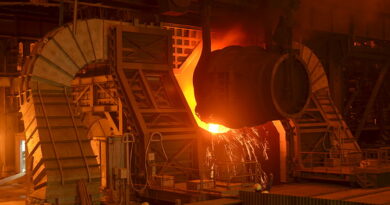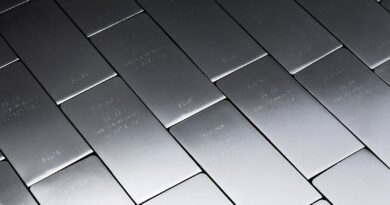Refined tin use in 2023 down and tin use in recovery cycle
The International Tin Association (ITA) has completed its twentieth annual survey of tin users, gathering data from tin consuming companies worldwide between June and September 2024. 80 companies took part in this year’s study, accounting for some 42% of estimated global refined tin use in 2023.
ITA’s latest estimate is that refined tin use in 2023 decreased -3.9% to 357,100 tonnes, based on data from the survey. This is more negative than the preliminary -1.6% estimate made by participants in last year’s Q2/Q3 survey as anticipated due to inflationary pressures.
The survey suggests a 3.0% increase in tin demand in 2024 to 367,900 tonnes, entering a moderate recovery cycle driven by China and underpinned by technology. Easing inflation will see a return to moderate global growth with tin-using green and digitalisation technologies accelerating, but geopolitical risks and supply chain shifts are prolonging uncertainty.
Refined tin stocks held by surveyed companies at the end of 2023 amounted to the equivalent of 3.8 weeks’ supply. Extrapolating to global consumption implies that world consumer stock holdings were around 28,200 tonnes. Consumer stocks remained steady through the year after dipping from 4.1 weeks in 2022. Forecasts for 2024 suggest recovering demand will decrease stocks to 3.4 weeks’ supply.
Provisional estimates of total global tin use, including refined and unrefined forms totalled 433,000 tonnes in 2023, down -4.9% from 2022. The Recycling Input Rate (RIR) was calculated to be 34.2% in 2023 and is forecast to increase to 35.4% in 2024.
Solder still accounts for the largest global share of tin use, stable at 51% in 2023.
Global average decline of refined tin use in this sector in 2023 was -1.0%, with growth in China insufficient to balance a significant RoW contraction. Forecasts for 2024 predict a strong recovery to a 2.5% global growth rate predominantly driven by China. Solar ribbon now represents around 20% of solder production, although growth has plateaued given China overcapacity and significant tin thrifting. Respondents are optimistic about longer-term prospects for increased use in solar, 5G, electric vehicles, and other new technologies.
The average proportion of lead-free solders in electronics was estimated at 92% globally in 2023, increasing from 86% in 2022. 76% of tin use globally in lead-free solders was specified at <100 ppm Pb, dipping slightly from 78% the previous year.
In chemicals, tin use by survey participants decreased by -3.1% in 2023 but with a strong recovery of 4.9% forecast in 2024. Although the sector saw a boost during the pandemic in 2020, it has faced significant macroeconomic challenges since 2018, with the recent downturn in residential construction in both the US and China further exacerbating its decline. A modest recovery in housing markets is forecast for 2024, with further medium-term boosts to tin chemical use possible from innovation, including new use in batteries in support of energy technologies.
Tin use in tinplate continued a sharp decline, decreasing overall to -7.6% in 2023. Turbulent trade data and anti-dumping headlines, especially in the US, came amid a 2.1% boost to China production. A strong rebound of 11.8% growth is forecast for RoW in 2024 as the market stabilises.
In the surveyed sample for tinplate, 31% had tin specifications under 50ppm, with 10% below 25ppm. Outside China, 50% of the tin used in this sample was classified as low lead, also under 50ppm.
Lead-acid battery tin use continued growth at 3.1% in 2023, slightly more than expected. China e-bike markets and an increase in high performance batteries for vehicles are forecast to accelerate growth to 10.2% in 2024.
The sector is especially strong in China, where e-bike markets are still expanding. Tin intensity in hybrid and other advanced vehicles also supports growth.
Tin use in tin-copper markets declined much faster than expected at -16.9% in 2023, especially outside China, with a further decline of -7.3% forecasted for 2024. The sector dynamics are complex with multiple product types. Strength from renewable energy sectors is strongly balanced against large volume commodity segments such as construction that have been especially impacted by macroeconomics.
Other traditional metal product markets were impacted by macroeconomic factors more severely than expected, contracting by -13.0% in 2023. They are projected to recover only partially, with a decline of -5.1% anticipated in 2024. Use segments are diverse, ranging from consumer-related pewter and wine capsule products to industrial bearings and powders.




